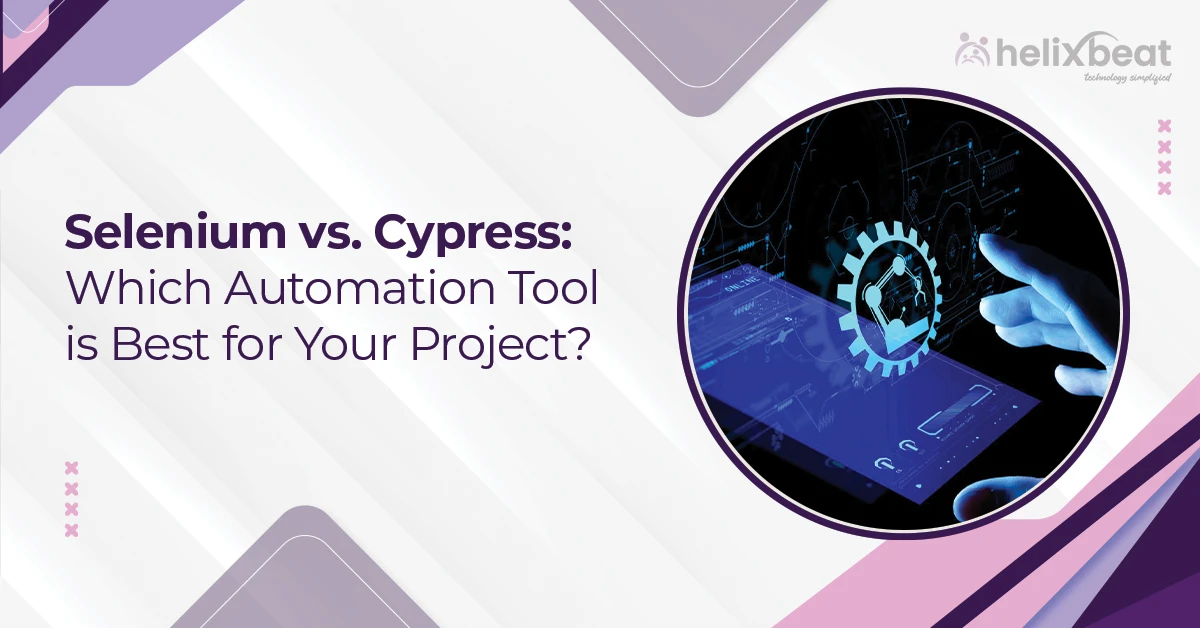Imagine launching a web application with high expectations, only to be met with a flood of user complaints due to unexpected bugs. This situation is every developer’s nightmare and highlights the critical role of automation testing in software development. Selecting the right testing tool can significantly impact the user experience and software stability.
For years, Selenium has been a leading choice for automation testing, offering flexibility and wide browser support. However, Cypress has gained popularity as a strong competitor, known for its developer-friendly approach and faster execution. Understanding the strengths and limitations of each tool will help you determine which one best suits your project’s needs.
Table of Contents
What is Selenium?
Testing across multiple browsers and operating systems is essential for developers and testers working on web applications. Selenium is an open-source automation framework designed to help automate web application testing, reducing the need for manual validation.
One of Selenium’s biggest advantages is its support for multiple programming languages, including Java, Python, C#, and JavaScript, making it accessible to a wide range of development teams. It is commonly used for UI testing, functional testing, and performance testing, helping businesses verify that their web applications function as expected.
Key Features of Selenium
- Supports multiple browsers, including Chrome, Firefox, Safari, and Edge.
- Works with various programming languages, offering flexibility in test automation.
- Integrates with popular testing frameworks like TestNG and JUnit for better test management.
- Allows parallel test execution, enabling faster test completion.
- Works with Appium to extend automation to mobile applications.
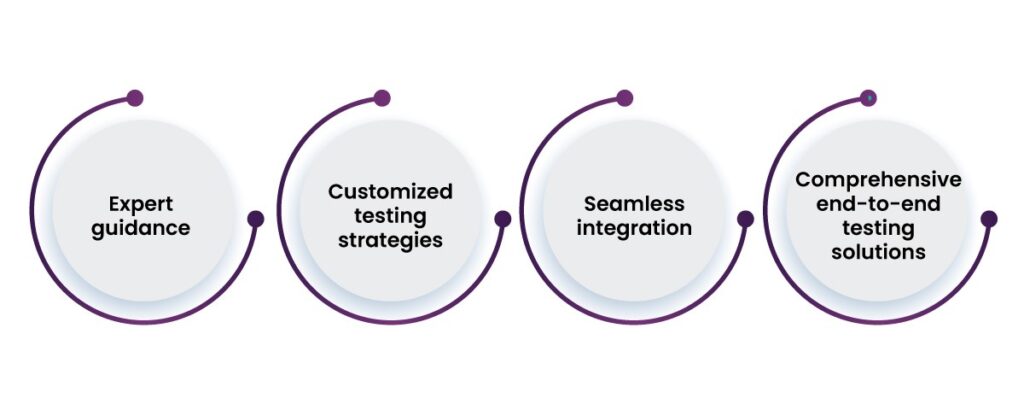
Pros of Using Selenium
- Open-source and widely supported – Selenium has an active community that offers resources, updates, and troubleshooting support.
- Highly flexible and scalable – It integrates with multiple frameworks and tools, making it suitable for both small and large-scale projects.
- Cross-browser compatibility – It enables testing across different browsers, ensuring consistent performance.
- Supports mobile testing – By integrating with Appium, Selenium can be used for mobile application automation.

Cons of Selenium
- Complex setup and configuration – It requires additional installations, such as browser drivers and dependencies.
- No built-in test reporting – External tools are needed to generate detailed reports.
- Slower execution speed compared to Cypress – Selenium interacts with browsers differently, making execution less efficient in some cases.
- Lacks built-in debugging and automatic waits – Testers must manually manage synchronization to avoid test failures due to loading delays.
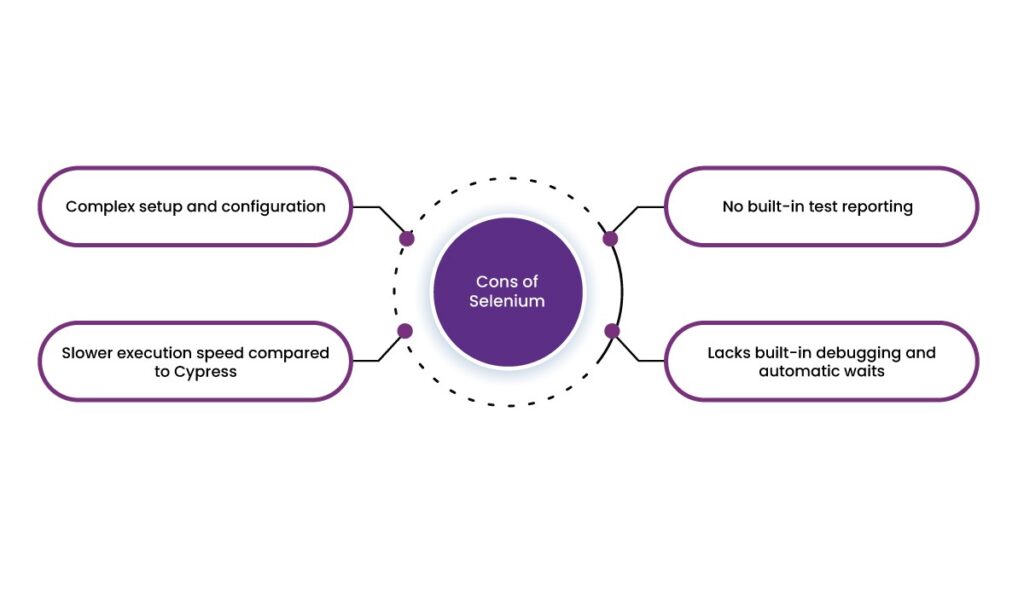
Despite these challenges, Selenium remains a powerful tool for web automation, particularly for teams that need flexibility, cross-browser compatibility, and extensive integration options.
What is Cypress?
Testing is a crucial part of the development process for developers working with JavaScript-based applications. Cypress is a modern front-end testing tool specifically built for JavaScript applications. Unlike Selenium, which interacts with browsers externally, Cypress runs directly inside the browser, allowing for faster and more reliable test execution.
Cypress is widely recognized for its real-time reloading, built-in debugging tools, and automatic waiting, which help reduce flaky test results. These features make it a popular choice for front-end developers who need a fast and efficient testing experience.
Key Features of Cypress
- Designed for JavaScript applications – Works seamlessly with frameworks like React, Angular, and Vue.
- Runs inside the browser – Enables faster execution and better control over test behavior.
- Automatic waiting – Eliminates the need for manual sleep commands, reducing timing-related test failures.
- Built-in debugging tools – Allows developers to inspect test failures quickly.
- Real-time reloading and snapshots – Help track changes during test execution.
- Great for end-to-end testing – Covers full user flows from login to checkout.
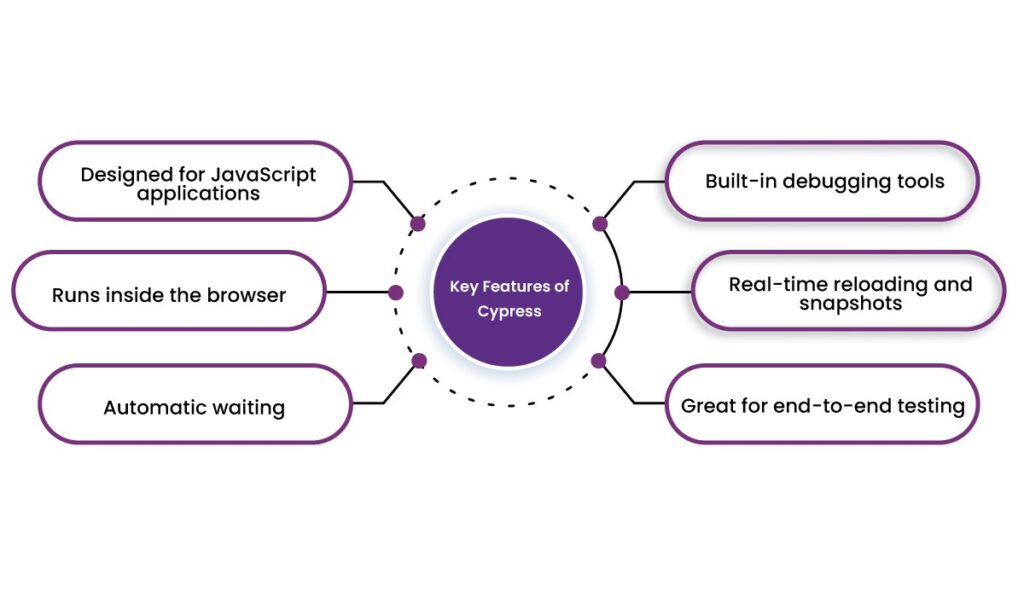
Pros of Using Cypress
- Fast execution – Running directly in the browser eliminates communication delays seen in external automation tools.
- Easy setup – No additional dependencies or drivers are required.
- Advanced debugging tools – Features like time travel, real-time reloading, and an interactive test runner simplifies troubleshooting.
- Built-in reporting and dashboard support – Generates test reports without external tools.
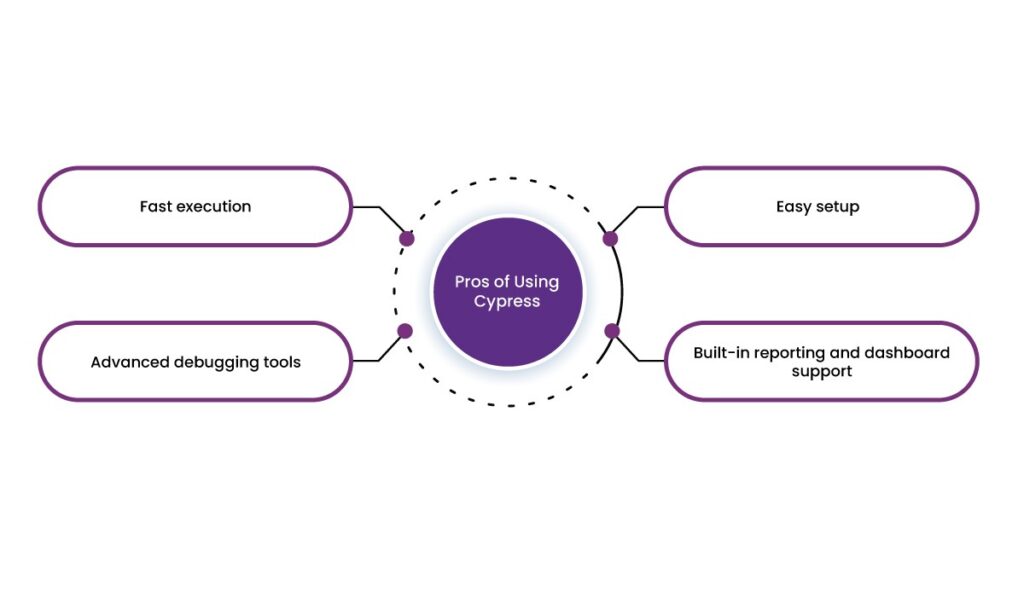
Cons of Cypress
- Limited to JavaScript and TypeScript – Unlike Selenium, it does not support other programming languages.
- Restricted cross-browser testing – While it supports Chrome, Firefox, and Edge, it lacks the extensive cross-browser capabilities of Selenium.
- Cannot run multiple browser instances in parallel, which can slow down large-scale test execution.
- Limited mobile testing support – Cypress is primarily designed for web applications, making mobile testing less effective.
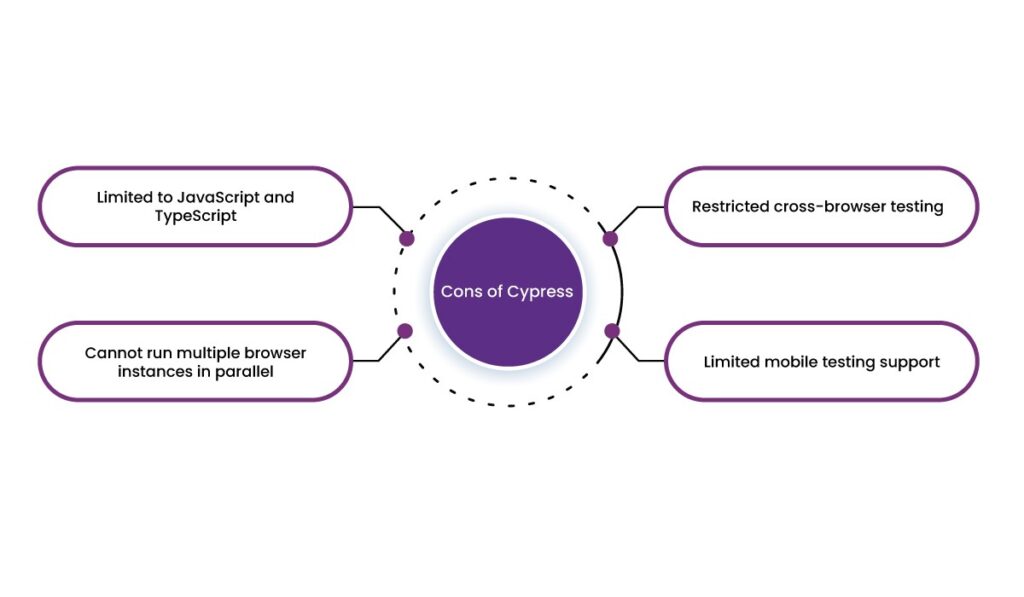
Despite its limitations, Cypress is a powerful tool for JavaScript developers who need a fast, developer-friendly testing framework with built-in debugging features.
Key Differences Between Selenium and Cypress
When selecting a testing tool, it’s important to consider the project’s specific needs. Selenium and Cypress are both widely used automation frameworks, but they serve different purposes. Here’s how they compare.
1. Programming Language Support
Selenium supports multiple programming languages, including Java, Python, C#, and JavaScript, making it a versatile choice for diverse development teams. In contrast, Cypress only works with JavaScript and TypeScript, making it ideal for JavaScript-based projects but limiting flexibility for teams using other languages.
2. Browser and Platform Support
Selenium runs on all major browsers, including Chrome, Firefox, Safari, and Edge, and supports multiple operating systems. Cypress, however, is best suited for Chrome-based applications, with limited cross-browser support, though it does work with Firefox and Edge.
3. Speed and Performance
Selenium interacts with browsers externally, which can slow down test execution. Cypress runs directly within the browser, resulting in faster test execution and real-time interaction with web elements.
4. Debugging and Testing Simplicity
Selenium requires additional logging and debugging tools to track errors effectively. Cypress includes built-in debugging, automatic waits, and time travel features, allowing developers to inspect test failures quickly and efficiently.
5. Parallel Execution
Selenium supports parallel execution using frameworks like TestNG. Cypress also allows parallel execution, but it requires access to the paid Cypress Dashboard service for advanced parallel testing capabilities.
6. Use Case Suitability
Selenium is ideal for large, complex applications that require cross-browser and mobile testing. Cypress is better suited for modern JavaScript web applications, especially those that prioritize speed, real-time debugging, and developer-friendly workflows.
Both tools have their strengths, so the right choice depends on the project’s requirements, testing scope, and team expertise.

Choosing the Right Tool for Your Project
Selecting the right automation testing tool depends on your project’s needs, technology stack, and team expertise. Selenium and Cypress serve different purposes, and understanding their strengths can help you make an informed choice.
Use Selenium if
- Your application requires cross-browser testing across Chrome, Firefox, Safari, and Edge or mobile testing using Appium.
- Your project is built with multiple programming languages, such as Java, Python, C#, or JavaScript, and you need a tool that supports them all.
- Your team has experience with Selenium and is comfortable configuring external dependencies and integrations.
Use Cypress if
- You are testing a modern JavaScript application built with React, Angular, or Vue and want a tool designed for JavaScript frameworks.
- Speed and debugging efficiency are priorities, as Cypress runs tests directly in the browser and offers real-time feedback with built-in debugging tools.
- You prefer a simple setup with minimal configuration, without requiring additional dependencies or third-party tools.
Both Selenium and Cypress are powerful tools, but the right choice depends on your project’s complexity, programming environment, and testing goals.
How Helixbeat Can Help with Test Automation?
Effective test automation helps businesses save time, reduce manual effort, and improve software reliability. Helixbeat specializes in delivering tailored test automation solutions for businesses of all sizes, ensuring their applications function smoothly across different platforms.
With expertise in Selenium, Cypress, Appium, and TestNG, Helixbeat helps teams implement structured testing approaches that improve accuracy and efficiency. Whether you are testing a web application, a mobile app, or a large enterprise system, Helixbeat provides the right automation strategy to meet your project’s needs.
Why Choose Helixbeat?
- Expert guidance on selecting the most suitable automation tool based on project requirements.
- Customized testing strategies designed for specific industries and application types.
- Seamless integration of automation tools into existing development workflows.
- Comprehensive end-to-end testing solutions covering functional, performance, and security testing.

Whether you need Selenium for cross-browser testing or Cypress for faster front-end validation, Helixbeat helps businesses implement the right test automation framework, making software testing more efficient and reliable.
To Wrap It Up
Both Selenium and Cypress have their strengths and limitations, and the right choice depends on your project’s requirements. Selenium is well-suited for enterprise-level applications that require cross-browser testing, making it ideal for large-scale software projects. On the other hand, Cypress is an excellent option for modern JavaScript applications, offering faster execution and built-in debugging tools for a smoother testing experience.
For businesses seeking reliable automation testing solutions, Helixbeat provides expert services using industry-leading tools. With a structured approach to test automation, Helixbeat helps optimize testing strategies, improve efficiency, and enhance software quality.
FAQs
1. Is Selenium better than Cypress for automation testing?
Selenium is better for cross-browser and mobile testing, while Cypress is ideal for modern JavaScript applications with faster execution.
2. Can I use Cypress for mobile testing?
No, Cypress is mainly for web application testing and does not support mobile testing.
3. Does Cypress support parallel execution?
Yes, but it requires the paid Cypress Dashboard service.
4. What are the main advantages of Selenium?
Selenium supports multiple languages, cross-browser testing, and integrates with other frameworks for a more flexible testing approach.
5. Can I run tests on Safari using Cypress?
Cypress has limited support for Safari, whereas Selenium fully supports it.
6. Is Cypress open source?
Yes, Cypress is open source, but some advanced features require a paid plan.
7. What language is best for Selenium automation?
Java, Python, and C# are commonly used for Selenium automation.



